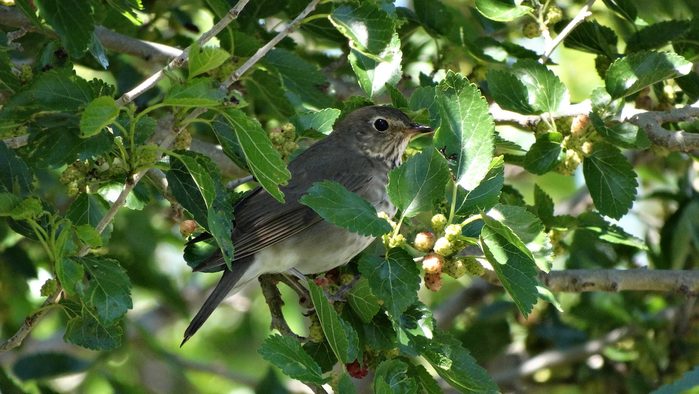
Thrushes
Robins and bluebirds are the thrushes you usually see in winter. But the varied thrush of the Northwest, the Townsend’s solitaire of the West, and the widespread hermit thrush also stay all winter. Hermit thrushes (above) and varied thrushes feed on a variety of berries, often alone. Solitaires live up to their name in winter, each fiercely guarding its own chosen trees from berry-eating relatives. They gobble the juniper berries as well as those of the mistletoe that grows on the trees. In a scanty year for juniper berries, the high-fat mistletoe makes up the difference in solitaires’ diets. Check out the top 10 berry trees and shrubs birds love.
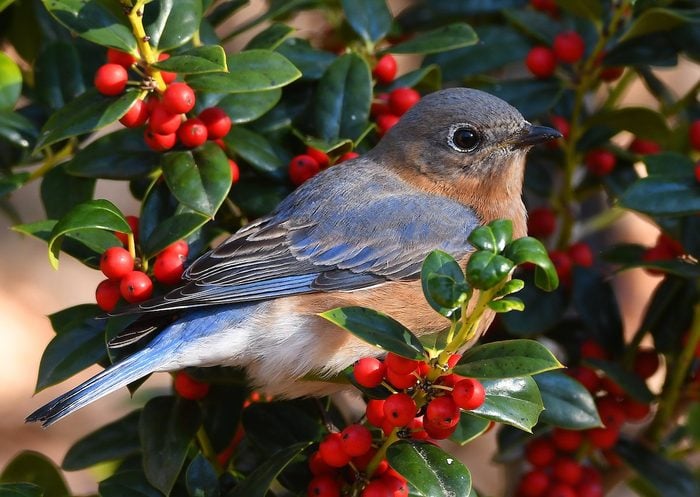
Bluebirds
After insects dwindle, bluebirds heavily depend on berries, and small wintering groups are always on the lookout. Winterberry is practically guaranteed to bring in nearby bluebirds, but its bright red berries disappear fast once they spot them. Evergreen holly, hawthorn and native junipers like eastern red cedar provide a much bigger banquet, attracting bluebirds for several weeks. Almost any berries are fair game, including those of poison ivy. In late winter, look for bluebirds at the fuzzy spires of staghorn sumac, along with birds like robins, northern flickers and downy woodpeckers.
Here’s how to grow a sand cherry shrub for birds and spring pollinators.
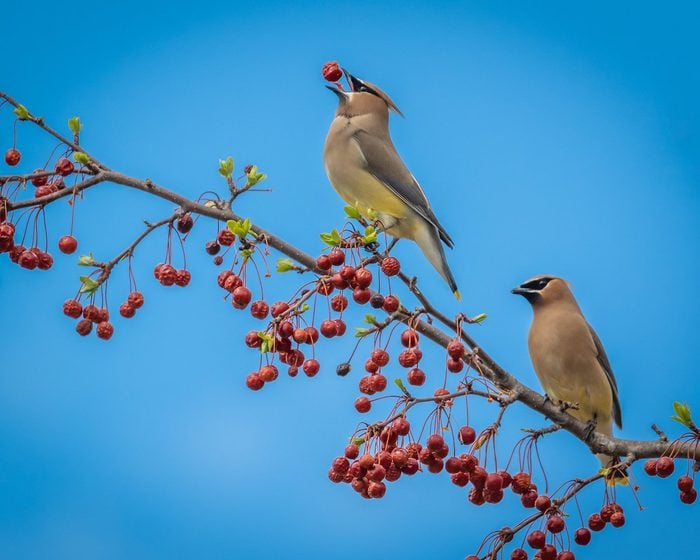
Cedar Waxwings
A juniper tree (Juniperus virginiana) is responsible for the common name of cedar waxwings, which flock to the blue-gray fruit in winter. “Flocking” is the word, because these social birds do nearly everything as a group. They have no home territory except at nesting time. Berries are the bulk of their diet year-round, and finding food motivates their movements. Look for wandering winter waxwings at flowering crab, hawthorn, mountain ash, deciduous or evergreen hollies, junipers, toyon and more—any berry plant that offers a feast big enough for a flock. Here’s more tips to attract waxwings with berries.
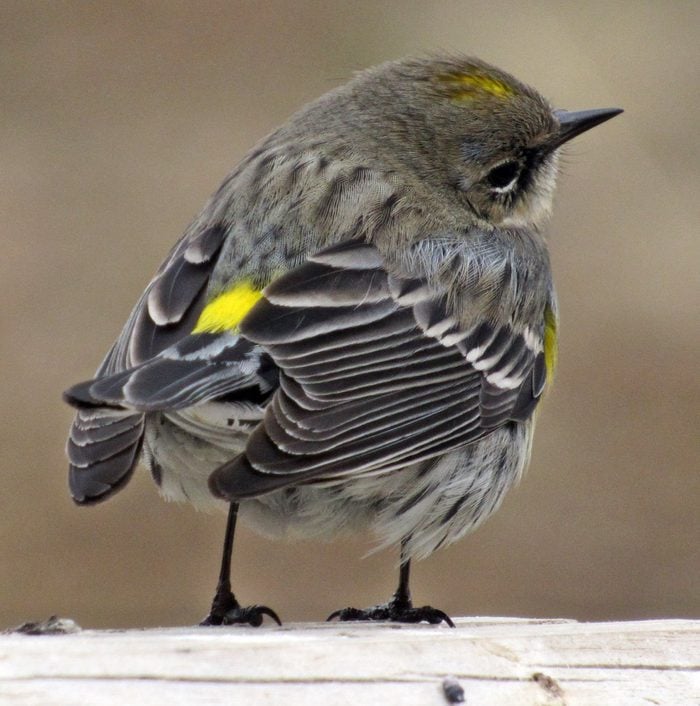
Yellow-rumped Warblers
The wood warbler that winters most widely in North America owes its success to myrtle berries (Myrtus), including bayberry and other natives. Unlike nearly every other bird that eats the berries—bluebirds, thrushes, robins, waxwings, flickers and more—yellow-rumps, once called myrtle warblers, are able to digest the waxy coating, transforming it into fat that helps them survive the cold. They also eat the berries of juniper, poison ivy, poison oak and Virginia creeper. If you’re near a bayberry or other myrtle, listen for a signature sharp chip. Tree swallows, the only other birds capable of turning myrtle wax into vital fat, often join the warblers at myrtles in their coastal wintering areas.
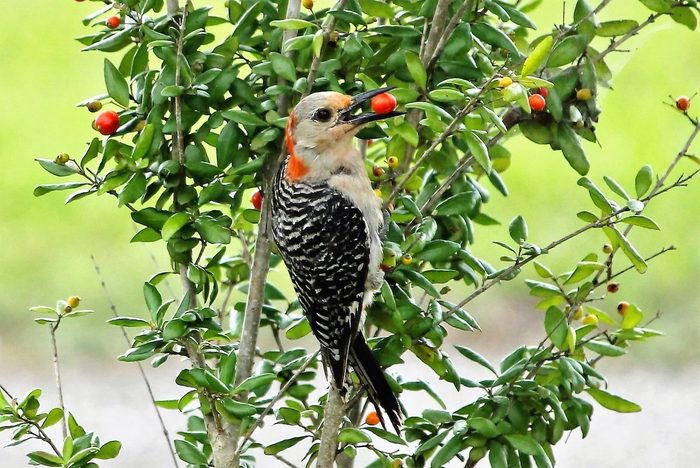
Woodpeckers
One at a time is the general rule for woodpeckers at winter berries. Even though they’re mostly singletons, what a variety you may see! Every woodpecker, flicker and sapsucker that’s around in winter seeks out berries, especially poison oak and poison ivy. These may be a problem for humans, but to birds, they’re a prize. Just like other berry-eaters, woodpeckers “plant” seeds of the berries they eat via their droppings, which can sprout into a welcome bonus—or extra weeding duty. Check out 10 common North American woodpecker species.
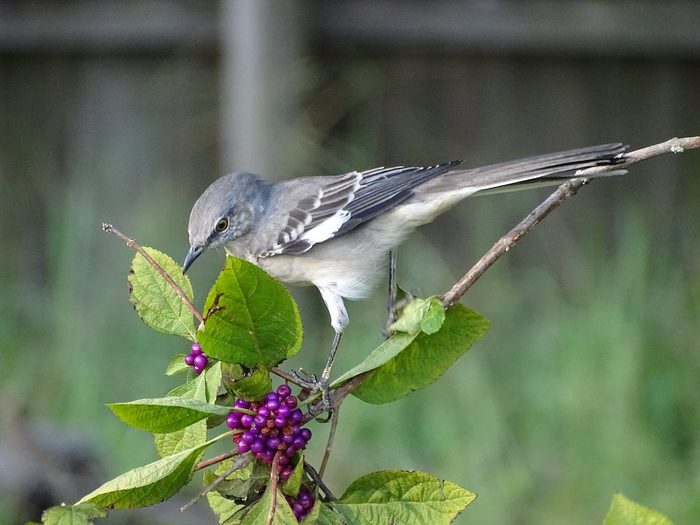
Northern Mockingbirds
An entertaining bully, this big, bold bird is a loner in winter. Expect occasional skirmishes at the berries, because Northern mockingbirds are notoriously territorial. Bittersweet, viburnums, crabapples, hawthorns, hollies, pyracantha, roses with small hips (including the invasive multiflora) and a long list of other berries go down the hatch. A wintering brown thrasher or gray catbird may also be drawn to the same berries, but these mockingbird relatives have much better manners. Follow these tips to attract Northern mockingbirds to your backyard.
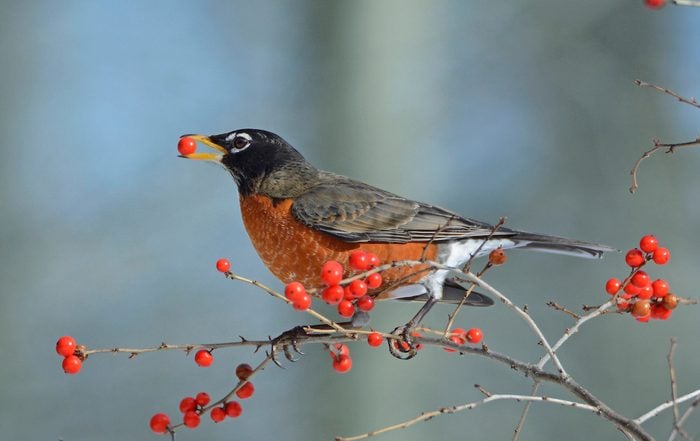
American Robins
Robins have something of a seasonal split personality—in summer, they’re backyard birds, hopping about the lawn; in winter, they retreat to woods’ edges and stay in flocks. In recent years, some individuals have begun to buck the usual trend and become feeder regulars. Look for a single backyard robin, or an entire roaming flock, at hawthorn, holly, juniper, pyracantha, hackberry, beautyberry, arrowwood and viburnum, toyon, sumac and other plants with persistent berries that hang on branches through winter.Here’s how to attract robins to your yard or garden.
